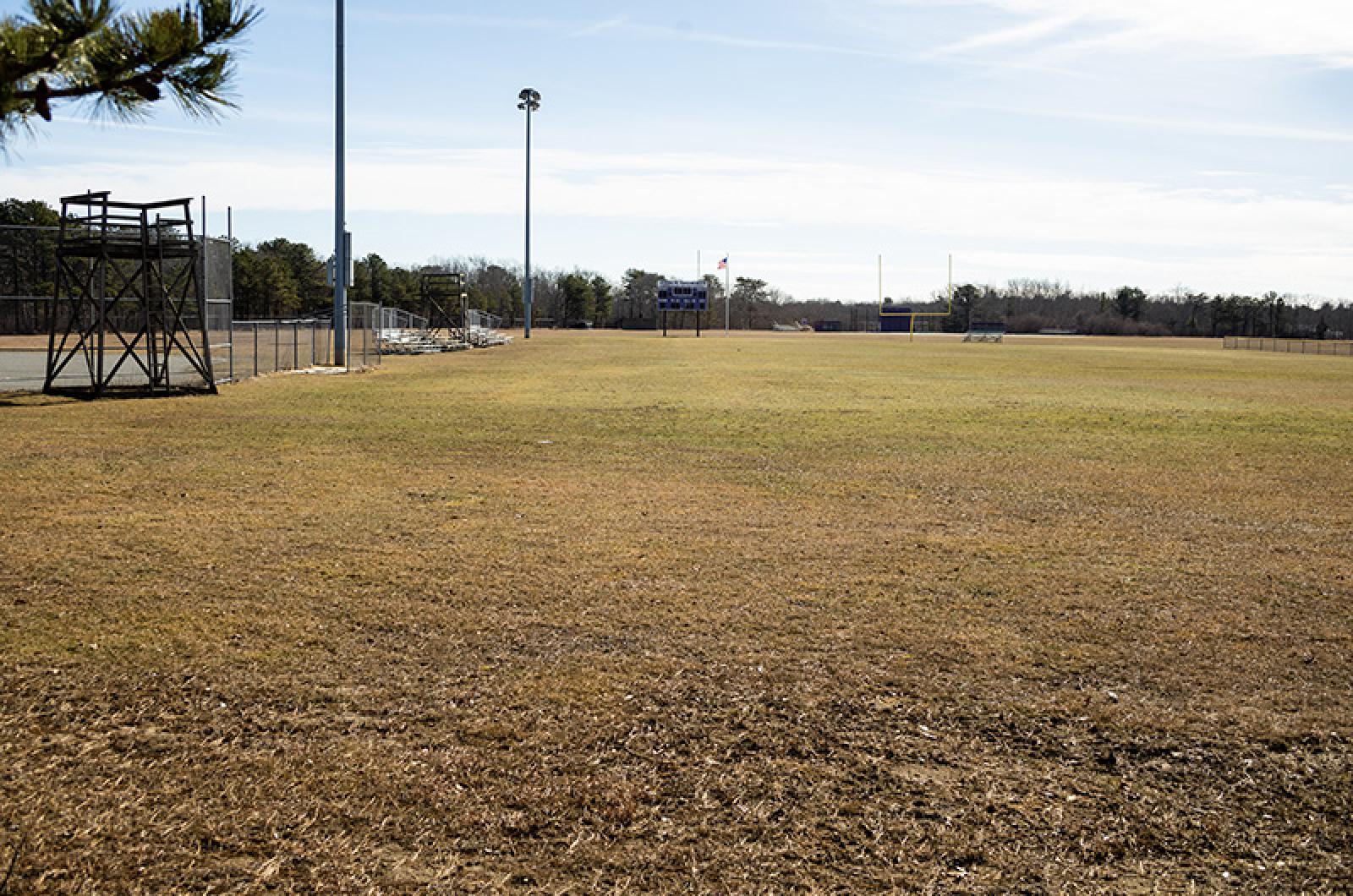A long-awaited toxicology report became a new point of tension at a Martha’s Vineyard Commission hearing Thursday, as scientists assessed the regional high school’s proposed athletic field renovation for health risks and environmental impact.
The hearing, which drew over 100 participants, marked the third in an ongoing series of public hearings devoted to the $7 million field renovation, which is under review by the commission as a development of regional impact (DRI). The project, which has sown divisions in the community, calls for five natural grass fields and one synthetic turf field, among other facility improvements.
Previous hearings aired testimony from proponents and opponents, passionate on all sides.
On Thursday, commissioners turned their attention to a question at the core of the project’s review — the toxicity of synthetic fields. In a highly technical three-hour discussion, commissioners heard testimony from at least three toxicology experts brought on by the MVC, the high school and the Field Fund, a primary opponent of the project.
Ron Myrick from the independent consulting firm Tetra Tech kicked off the conversation with the results of a toxicology report analyzing the chemicals used to make the synthetic turf and their potential risks to human health and the environment.
The tests were ordered by the commission and conducted independently by Tetra Tech, with a peer review and recommendation completed by the firm Horsely Witten. The high school paid for the $51,000 report.
Mr. Myrick said test results showed small amounts of per and polyfluoroalkyl substances (PFAS), which can be harmful to humans but are present in most soils.
“In summary, this is what we found, low level concentrations . . . of . . . semi volatiles, metals and PFAS in the various synthetic turf components,” he said. “However, these materials are present in concentrations that are consistent with background concentrations in natural soil or concentrations well below the risk based standards.”
Brian Massa, a scientist with Horsely Witten, added that chemicals from the field could leach into the Island groundwater, but concluded that drinking water would remain within Massachusetts DEP standards.
Both scientists strongly emphasized the limits of the testing science currently available for PFAS, urging the school to adopt a long-term monitoring plan.
Two more experts — one speaking for the high school, the other for project opponents — then gave their own, conflicting testimony regarding the report, engaging in occasionally tense exchanges.
Kristen Mello, the expert speaking for the Field Fund, said the turf chemicals posed serious health risks.
“PFAS exposure has been linked to reductions in antibody response and disease resistance, increases in airway hypersensitivity, asthma and risk of autoimmune disease,” she said in part.
Dr. Laura Green, the toxicologist speaking for the high school, pushed back vehemently, arguing that PFAS is already present in the environment. She said concerning levels of lead found in Vineyard soil presented a larger problem than PFAS.
“For the life of me I cannot understand why anyone would be concerned about perfluorinated-alkyl substances here. There is a lot more in dirt than there is in BrockFill, but these are tiny numbers,” Dr. Green said. “We toxicologists are concerned much more about heavy metals than we are about [PFAS].”
During a question and answer period that followed, a few commissioners pushed back against testimony from the high school toxicologist. In a sharp exchange, commissioner Ben Robinson asked about how to reconcile increasing levels of chemicals in the environment as industry regulation standards continue to decrease, leading to more disagreement between the high school and Field Fund experts, and testy remarks from Mr. Robinson.
“What we’re talking about is a single product here, but we’re talking about a significant amount of that single product. And if we want to lower the levels of PFAS in the background we should stop adding PFAS into the background,” he said.
Other commissioners, including Doug Sederholm and Jeff Agnoli, expressed caution about the many unknowns regarding chemicals referenced in the reports.
“I think it would be safe to say based on all the science we’ve heard that there’s a lot more to learn . . . and that would be in the years ahead long after the field would be installed,” Mr. Agnoli said.
In broader public testimony during the hearing’s final half-hour, some expressed confusion at the conflicting scientific reports.
“We’ve all heard experts on both sides, I would say you know they make very strong arguments, but they both can’t be right . . . it can’t both be true that the field is toxic or not toxic” said Sam Hall.
Greg Coutinho spoke forcefully, calling plastic a toxic pollutant and urging the high school to invest in its grass fields, while Cynthia Doyle criticized the school for ignoring the environmental consequences of turf.
“The school leadership says the school is in great academic shape. But that is not true, our high school is in trouble. It is avidly pursuing a project that exacerbates climate change plastic pollution and ignores local zoning,” Ms. Doyle said.
On the other side, Louis Paciello spoke emotionally about the project and its lengthy review process in one of the final comments of the evening.
“We’re working with these kids on these fields, we’ve played on them, we coach on them,” he said. “It’s a little frustrating when we have to sit and listen to all this science and it seems at times that people that are in the trenches are kind of getting overlooked.”
The hearing was continued to March 18.




Comments (13)
Comments
Comment policy »